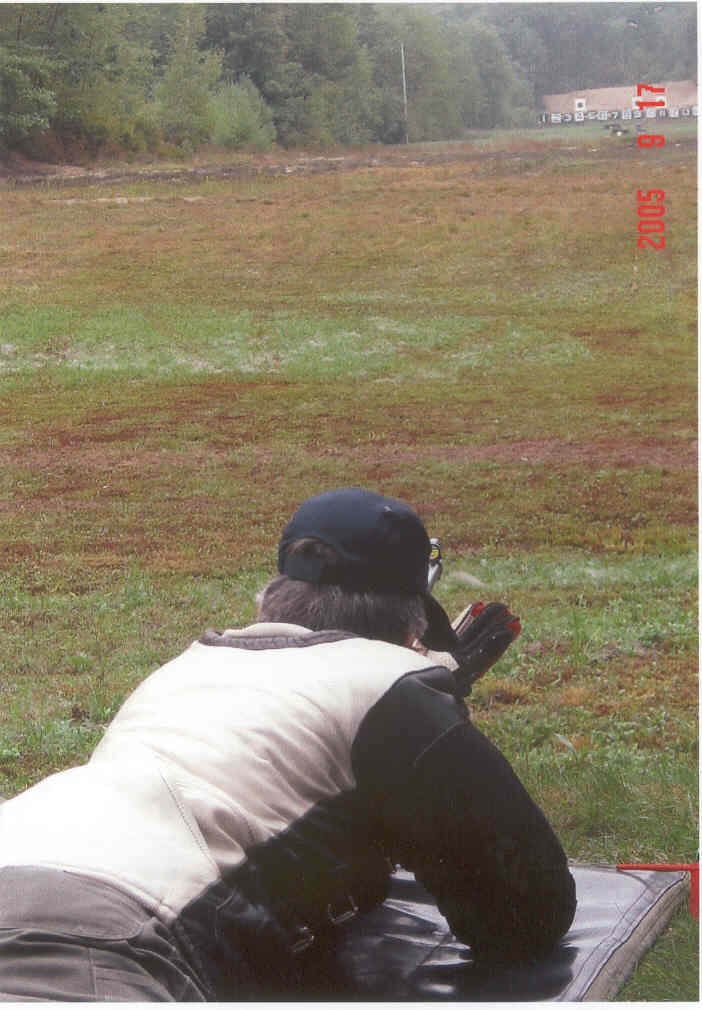(update 11-Feb-2010) For 2010 it has been decided to "merge" F-TR and F-Farquharson, using the more lenient of the two rules, to be offered as "F/F" (i.e. .223 or .308, any bullet weight, and any means of front support as per F/Open)
In our present rulebook we have two very similar versions of F-Class that are fired with .223/.308 rifles. There are only two differences between F/
Farky and F-TR, and while they are so minor that it is not really meaningful to offer both classes, it has not yet been
possuble to fully merge the definitions of F/F and F/TR at the international level (
ICFRA rules and competitions). I would like to see us resolve this issue for Canadian F-Class shooting, and offer only one ".223/.308" kind of F-Class shooting for next year.
Our F/
Farquharson class permits any form of front rest to be used, including
benchrest-style pedestal front rests, and also limits bullet weights to the same limits as TR rifles (which is, presently, 155 max for .308, and no bullet weight limit for .223). The official
ICFRA F/Restricted class, which has since renamed to "F-TR", only permits
bipods to be used as a front rest, and allows bullets of any weight to be used, for both .308 and .223. Interestingly, the vast majority of the F/Restricted shooters at the 2009 F Class World Championships in
Bisley used .308/155.
If we strictly adopt the
ICFRA F-TR version as our one and only kind of .223/.308 F-Class shooting, there will be a number of Canadian shooters who will have to either change to using a
bipod or to no longer fire ".223/.308 F-Class" at our Canadian Championships. It is the opinion of most Canadian shooters that a pedestal front rest does not provide any significant competitive advantage over a
bipod, especially since in modern F-Class parlance a "
bipod" can be a pretty sophisticated piece of gear. And this is reflected in our F-
Farky rules of many years standing, in which we permit any form of front rest to be used.
If we stick with our F/
Farky version, we might lose potential entries from competitors who wish to shoot with equipment legal for use at the
FCWC 2013 matches - these could be visiting American or British F-TR teams, or it could be our own Canadian F-TR team, should any of them wish to explore the use of bullets heavier than 155 grains for their F-TR rifles.
The best proposal I have heard yet, is that we basically merge the two classes, using the least restrictive definitions of each. Perhaps we would want to call the result "F-
Farky", or perhaps we would call it "F-TR(Canadian)", but the essentials would be that any form of front rest would be permitted, and that any.223 or .308 bullet weight would be permitted. In this class, any existing F-TR or F-
Farquharson rifle would be legal. If there is something bad to be said about this proposal, it would be that we are departing from the standard
ICFRA practice, which might bring into question either our dedication to eventually adopting
ICFRA rules for our own shooting, or perhaps whether our trial of
ICFRA rules is in fact a meaningful trial of
ICFRA rules after all, since we keep every-so-slightly tweaking
ICFRA rules slightly to better suit our domestic desires.
